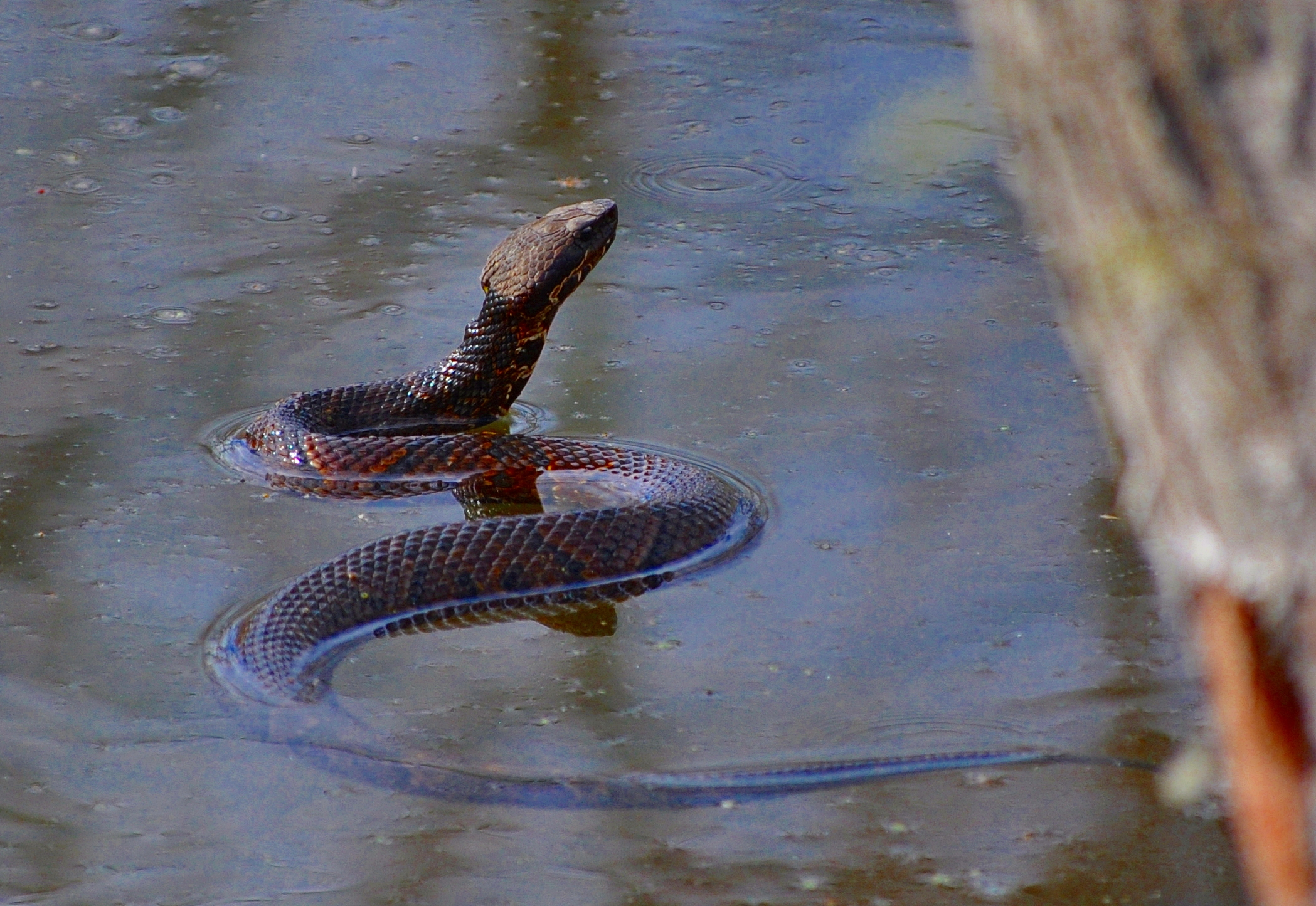Cotton Mouth Snake
Agkistrodon piscivorus is a venomous snake, a species of pit viper, found in the southeastern United States. Adults are large and capable of delivering a painful and potentially fatal bite. When antagonized, they stand their ground by coiling their bodies and displaying their fangs. Although their aggression has been exaggerated, individuals may bite when feeling threatened or being handled. This is the world's only semiaquatic viper, usually found in or near water, particularly in slow-moving and shallow lakes, streams, and marshes. The snake is a strong swimmer and has even been seen swimming in the ocean. However, it is not fully marine, unlike true sea snakes. It has successfully colonized islands off both the Atlantic and Gulf coasts.
The generic name is derived from the Greek words ancistro (hooked) and odon (tooth), and the specific name comes from the Latin piscis (fish) and voro (to eat); thus, the scientific name translates into "hooked-tooth fish-eater". Common names include variants on water moccasin, swamp moccasin, black moccasin, cottonmouth, gapper, or simply viper. Many of the common names refer to the threat display, where this species will often stand its ground and gape at an intruder, exposing the white lining of its mouth. Three subspecies are currently recognized, including the nominate subspecies described here.
This is the largest species of the genus Agkistrodon. Adults commonly exceed 31 in in length; females are typically smaller than males. Total length, per one study of adults, was 26 to 35 in. Average body mass has been found to be 10.32 to 20.44 oz in males and 7.09 to 8.96 oz in females. Occasionally, individuals may exceed 71 in in length, especially in the eastern part of the range.
Although bigger ones have purportedly been seen in the wild, according to Gloyd and Conant (1990), the largest recorded specimen of A. p. piscivorus was 74 in in length, based on a specimen caught in the Dismal Swamp region and given to the Philadelphia Zoological Garden. This snake had apparently been injured during capture, died several days later, and was measured when straight and relaxed. Large specimens can be extremely bulky, with the mass of a specimen of about 71 in in length known to weigh 10 lb.
The broad head is distinct from the neck, and the snout is blunt in profile with the rim of the top of the head extending forwards slightly further than the mouth. Substantial cranial plates are present, although the parietal plates are often fragmented, especially towards the rear. A loreal scale is absent. Six to 9 supralabials and eight to 12 infralabials are seen. At midbody, there are 23–27 rows of dorsal scales. All dorsal scale rows have keels, although those on the lowermost scale rows are weak. In males/females, the ventral scales number 130-145/128-144 and the subcaudals 38-54/36-50. Many of the latter may be divided.
This is the most aquatic species of the genus Agkistrodon, and is usually associated with bodies of water, such as creeks, streams, marshes, swamps, and the shores of ponds and lakes. The U.S. Navy (1991) describes it as inhabiting swamps, shallow lakes, and sluggish streams, but it is usually not found in swift, deep, cool water.
It is also found in brackish-water habitats and is sometimes seen swimming in salt water. It has been much more successful at colonizing Atlantic and Gulf coast barrier islands than the copperhead. However, even on these islands, it tends to favor freshwater marshes. In various locations, the species is well-adapted to less moist environments, such as palmetto thickets, pine-palmetto forest, pine woods in East Texas, pine flatwoods in Florida, eastern deciduous dune forest, dune and beach areas, riparian forest, and prairies.

By DMangus. CC BY-NC 2.0, via Flickr

